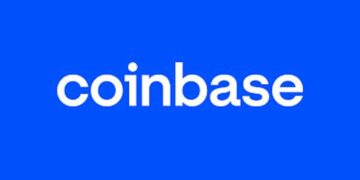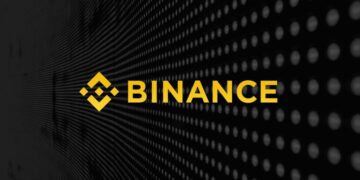Blockchain know-how is acquainted to cryptocurrency customers and nationwide banks, and consciousness of it’s spreading quick to avid gamers. Functions in business, significantly provide chain administration, have been showing as effectively. By means of them, blockchain know-how could enhance home life in unseen methods, reminiscent of making certain high-quality meals, responsibly sourced seafood, or stopping the counterfeiting of prescription drugs. Nonetheless, the house could also be blockchain’s closing frontier.
Blockchain penetration on the family degree is to this point fairly low, however day-to-day utility was no afterthought for blockchain builders. Christoph Jentzsch, Simon Jentzsch and Stephan Tual, who in 2016 created The DAO — the short-lived first decentralized autonomous group (DAO) — introduced Slock.it, “the primary bodily implementation of blockchain know-how,” the identical yr. Slock.it know-how linked units on the Web of Issues (IoT), reminiscent of locks and funds programs, in a safe, non-intermediated method that may very well be used, for instance, for renting objects and property. In 2019, Slock.it was acquired by Blockchain.com, which continues to supply these providers to at the present time.
Making dwelling life higher
Getting IoT units to work together is a formidable problem. It’s being addressed on a world degree, however the issue is felt in lots of properties, the place the Amazon Alexa, Apple HomeKit, Google Assistant and Samsung SmartThings ecosystems could coexist with out cooperating, together with good units that don’t work with any of them. In an effort to make dwelling good know-how extra manageable, the Connectivity Requirements Alliance, with 247 contributors and 190 adopters, is creating Matter, an overarching blockchain-based connectivity protocol. Matter is anticipated to premiere this yr, two years overdue.
Inexperienced vitality is one other space the place blockchain can transfer from large-scale options to the family. Whygrene blockchain and cloud-based software program let customers create “digital energy crops” that primarily make them their very own vitality merchants. The mission is presently on the business pilot stage.
Whygrene is partnering with utilities and house owners of photo voltaic panels, batteries and electrical automobiles. Customers who decide in by their electrical firm will be capable of cost their EVs throughout off-peak hours of the day when vitality costs are low. At peak hours, when costs are increased, they’ll discharge extra saved vitality by promoting it again to the utility.
Creator Patrick Phelps informed Cointelegraph that EV drivers might probably use Whygrene not solely to cowl the prices of charging their automobiles however even make a revenue from it. Customers would see credit or rebates in fiat forex, however behind the scenes, the system would run on a token referred to as a CryptoJoule.
The Whygrene software program is also tailored to shopper demand response instances reminiscent of dwelling heating and cooling, which is often the biggest family vitality want. Through the use of a house battery, the system might warmth or cool the house off-peak simply earlier than the inhabitants come dwelling from work or faculty. When demand spikes, it might swap off, saving the buyer cash not solely by conservation but in addition by the advantages of the digital energy plant. In response to Phelps, new choices will come on-line as battery know-how improves.
Hit and miss in leisure
Blockchain-based content material supply operators have tried to problem conventional media with combined success. Blockchain-based streaming platforms can declare a wide range of benefits over Web2 know-how, particularly for music, reminiscent of a brand new financial mannequin of Web3 stay streaming that makes it extra reasonably priced and creators’ management over the product. Thus, Web3 is extra amenable to area of interest markets, as it’s extra sensible to stream smaller-scale occasions than earlier than. Huge-name expertise and main firms have gotten concerned, too, however Web3 appears to pose little risk to this point to the hegemony of cable TV and YouTube.
In contrast to Matter, which might simplify the usage of know-how within the dwelling, and Whygrene, which might enable customers to decide in to a program run by a utility, blockchain-based leisure requires some fluency in its know-how by demanding cost in cryptocurrency or utilizing nonfungible tokens (NFT) for ticketing or as souvenirs. Whether or not it would drive adoption is unclear. The rising move-to-earn development, based mostly intently on the extremely profitable play-to-earn mannequin and equally arcane for the non-crypto-savvy person, could maintain larger evangelizing promise by the monetary motivation it gives.
OliveX, a digital well being and health firm and a derivative of video games maker Animoca Manufacturers, is an instance of move-to-earn. It makes use of gamification, augmented actuality and move-to-earn experiences to encourage train. Now in its alpha stage, OliveX’s Dustland Runner sport is about in a dystopian future the place the destiny of the world relies on the primary character working by a hellscape to ship a parcel. In the true world, gamers are working with their smartphones in hand and headphones on. A Dustland Rider sport for bicyclists is within the works as effectively, and there’s a fitness-themed metaverse with company companions built-in into it.
OliveX co-founder and CEO Keith Rumjahn informed Cointelegraph in an announcement, “We’re very excited concerning the upcoming iOS launch of our Dustland Runner app. We will lastly reveal the facility and potential of our sport, encourage individuals to have enjoyable and keep lively, and incentivize gamers within the course of.”
The sport, not like lots of its opponents, requires no funding in an NFT to begin taking part in, however it would ultimately require gamers to personal not less than certainly one of its Kettlemine NFTs to begin incomes. On the time of writing, a Kettlemine NTF prices a modest 0.0014 Ether (ETH), just below $4, on Animoca-owned OpenSea. Incentives are being created to encourage the acquisition of extra NFTs. Gamers obtain “completion tickets” for doing their duties, and the tickets will ultimately be exchangeable for DOSE cash. “Particulars of the incomes system will likely be launched later,” the corporate informed Cointelegraph.
Health fanatics who’re lured this far into the cryptoverse can maintain on to their hats as they’re immersed in Operation Ape. OliveX bought Bored Ape Yacht Membership #8222, an ape often known as Buster, who will turn into a personality in Dustland. Proudly owning an Operation Ape: Unique Entry Move NFT will enable gamers to trade their DOSE for ApeCoin.
“By integrating Buster, one other NFT mission, into Dustland, we hope to foster a artistic atmosphere for gamers that promotes the spirit of collaboration and interoperability,” Rumjahn informed Cointelegraph.
It’s what makes a home a house.












![Why Ethereum [ETH] address outflows may be headed for DeFi](https://cryptonoiz.com/wp-content/uploads/2023/03/AMBCrypto_An_image_of_a_stylized_Ethereum_logo_with_arrows_poin_22f2aeff-c7bb-4c7d-aec7-547a37a35e82-1-1000x600-360x180.jpg)


























